Who was the best basketball player ever to play for the
Syracuse Orange? I am not referring to
their entire career, but rather their peak year, how good of a player did they
become while an Orangeman? I am not
talking about potentially how good they could have been, but rather what they
did show to us.
I am going to restrict this to players I saw play. Dave Bing
who played his last game for the Orangemen a couple of months before I was born
is therefore excluded.
I do not mean which player had the greatest season ever for
the Orangemen. That would clearly be Carmelo Anthony. Anthony was the best player on the only
Syracuse team to win the NCAA National Championship.
I think John Wallace was clearly the most valuable player
ever for the Orangemen. Wallace carried the Orangemen to the brink of the 1996
National Championship with no teammate named to any All Big East teams that
year.
I think Lawrence Moten has the highest basketball IQ of any
Orangemen I ever saw play. He was so smooth staying within the flow of the
game, and would effortlessly and often quietly score 20 points.
I think Pearl Washington was the most significant player in
Orangemen history. He brought recognition to Syracuse University at a National
level, helping the Orange be a national power.
I can also state that my five all-time favorite Orangemen,
chronologically, are Rafael Addison, Stephen Thompson, Lawrence Moten, Gerry
McNamara, and Andy Rautins.
Who do I think were the five best players for the Orangemen?
Fifth: John
Wallace. Wallace as a senior carried the
Orangemen to the National Championship game, averaging 22.2 points per game
(ppg), and 8.7 rebounds per game (rpg). He
shot 42% from three point range, the best on the team, even outshooting,
percentage wise, the team’s three point specialist Marius Janulis (41.6% to
John’s 42.1%). He would lead the team
in scoring by 9.5 ppg, and would score 30+ points five times, and led the team
in scoring 30 of the 38 games played. Wallace
played strong defense, leading the team with 63 blocks, and also had 44 steals.
He played exceptionally well in the NCAA tournament, leading the team in
scoring all six games, including a great 30 point effort against Georgia, and a
29 point effort in the championship game. The Orangemen were only down by four
points in the Championship game to a much more talented Kentucky team, when
Wallace fouled out with about 2 minutes to go.
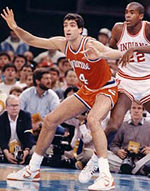 |
| Rony Seikaly |
Fourth: Rony
Seikaly. Seikaly came to Syracuse as a
raw recruit with a flabby body and poor basketball skills. He developed into an outstanding collegiate
center, with a nice turnaround jump shot, and great defensive skills. Seikaly
really came into his own during the NCAA tournament his junior year. Seikaly would have a dominating game against Florida’s
highly touted Duane Schintzius, scoring 33.
Seikaly kept that playing level going as the Orangemen upset North
Carolina and eventually got to the NCAA finals, before losing to Indiana. Seikaly performed at that level most of his senior
year averaging 16.3 ppg, 9.6 rpg, along with 85 blocked shots. He shot 57% from the floor, and was great at
running the court both on offense and defense.
The team was loaded with scoring talent with Sherman Douglas, Matt Roe,
Stephen Thompson and Derrick Coleman in the lineup, and yet Seikaly led the
team in scoring primarily with his low post moves. The Orangemen would win the Big East
Championship but lose in the NCAA tournament to Rhode Island when Douglas was
off his game due to illness. Seikaly scored 27 points and had 10 rebounds in
that loss.
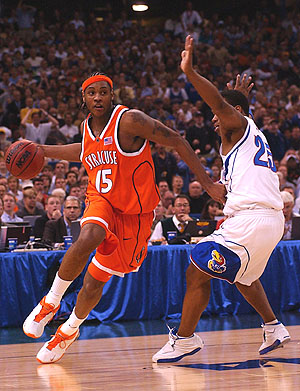 |
| Carmelo Anthony |
Third: Carmelo Anthony.
I know I’m going to take flak from several Orange fans for this
selection, as they think he was number one.
Anthony was without a doubt one of the most gifted basketball players in
SU history. As a freshman, and his only season with
Syracuse, he displayed a wide array of offensive skills. He was adept at
scoring from the post, driving the lane, and pulling up from perimeter, making
34% of his three point shots. He displayed an A-Type personality and was eager
to be the man with the ball, and did well in that position. He would lead the team in scoring 24 of the
35 games they played, scoring 30+ points three times. The biggest performance
of his career came in the Final Four where Anthony made 12 of 19 shots for 33
points, with extremely stellar play, to dominate Texas and lead the Orangemen
to the championship game. Anthony would
score 20 points, with 10 rebounds and 7 assists in the Championship game, leading
all scorers, as the Orangemen won their first National Championship.
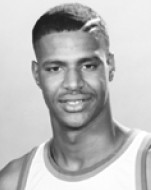 |
| Billy Owens |
Second: Billy Owens.
Owens was simply dominating his junior year at Syracuse. Derrick Coleman and Stephen Thompson had
graduated, and Owens stepped up to fill the void scoring 23.2 ppg, with 11.6
rpg and 3.5 assists per game (apg). He
shot 39% from three point range, and 51% from the floor overall. He was offensively a dominating player inside
and outside. Defensively he led the team
with 78 steals, and led the team in scoring 21 of the 32 games played. In his
career he had 8 games with 30+ points, and ten games with 15+ rebounds. He led the team to a Big East regular
season title, and a 26-4 record with a #6 ranking. There were hopes that he could carry SU to a
national title like Danny Manning had done with Kansas in 1988. Inexplicably the team crashed in the post
season, losing its first round of the Big East tournament to Villanova, despite
17 points and 22 rebounds from Owens.
They would then get upset by Richmond in the first round of the NCAA despite
22 points from Owens.
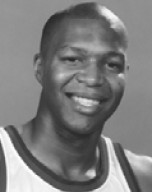 |
| Derrick Coleman |
First: Derrick
Coleman. Derrick Coleman was a
tremendously gifted 6’10” forward who could dominate players inside and also
score from the perimeter, in an era where big men did not do that. Coleman was the greatest rebounder in SU and
NCAA history, with a NCAA record 1,537 rebounds. He averaged 12.1 rpg his
senior year, despite having to share rebounds with Billy Owens, Stephen
Thompson and LeRon Ellis. He scored 17.9
ppg, essentially splitting the scoring duties with prolific scorers Owens (18.2
ppg) and Thompson (17.8 ppg). He shot
37% from three point range and 55% from the floor. Coleman had 51 steals and led the team with
67 blocks. The Orangemen would win the
Big East regular season title despite having no real point guard play. They
would reach a #4 ranking in the country, before losing in the Big East Finals
to UConn, and then losing to Minnesota in the NCAA Sweet Sixteen. Coleman would be recognized for his stellar
season by being the Big East Player of the Year, making the AP All American
First team, and being drafted #1 overall in the NBA draft.
I know many want to argue Anthony over Coleman. They are of course, different style players. Anthony was definitely a better player as a
freshman than Coleman was, though Coleman was the Big East Rookie of the Year,
and he did pull down 19 rebounds in the National Championship game. But we are not comparing a freshman Anthony
to a freshman Coleman. We are comparing a freshman Anthony to a senior Coleman.
Consider that Coleman had four collegiate seasons to master
his game, Anthony just one. He was a 22 year old 6’10”, 225 lb senior
when he completed his senior year.
Melo was a 6’8”, 195 lb forward, 18 years old when he completed his
freshman year.
Coleman was recognized as the top player in the country and
his conference. Anthony didn’t win the
Big East Player of the Year (Troy Bell did), and was not an AP First Team
All-American. I know some politics come into that, but Anthony did not make
enough impression to overcome those politics.
Coleman played in an era where all talented players stayed
3-4 years in college. Guys like Patrick
Ewing, Chris Mullin, Michael Jordan, Ralph Sampson, Billy Owens, Danny Manning,
etc. all perfected their games in college. And Coleman had to play against players
like that routinely. And he was able to succeed against them. Today, all those
guys, including Coleman, would have been in the NBA after their
freshman/sophomore years.
Anthony had his talented opposition to play against too. But
those talented upper classmen that would have given him a battle were gone,
already earning their millions in the NBA.
There are guys who develop and by their fourth year are outstanding
college players, guys like our own Michael Gbinije and Rakeem Christmas. But Coleman’s era had those guys too… plus
the superstars in college.
Freshman on average are better today than they were 20 years
ago. But they aren’t better than 21-22 year NBA superstars staying in college
because that was the norm.
Anthony was a tremendous offensive threat, and fantastic at
handling the ball, driving to the hoop.
Coleman could handle the ball, but that wasn’t his forte. But Coleman
was much more dominating near the hoop than Anthony. He was bigger, stronger, and had a freakish
arm length.
Coleman was the better defensive player. He played center
his junior year and had 127 blocks, a school record until Etan Thomas broke it
9 years later. Anthony did his part in
the zone defense, but he has never been known for his defensive prowess.
Anthony’s 2003 squad reached a peak ranking of #11, and
started the year unranked. Coleman’s team got as high as #4.
Coleman’s biggest issue was that at times he was indifferent
on the court, specifically against lesser opponents and earlier in this career.
Anthony’s type A-personality never let him give up. Coleman often played with a snarl, whereas
Anthony always with a smile. Coleman
could be nasty on the court, whereas Anthony was more a quiet assassin and let
his skills do the talking. D.C. gave
coach Jim Boeheim a lot of headaches; I doubt Melo ever game coach one.
Some will argue that Melo’s team won the championship and
Coleman’s did not. But do a flashback to
both championship games the guys played in. Coleman missed a front end of a
one-and-one in the final minute, and Keith Smart made a jump shot over Howard
Triche resulting in the loss for Syracuse.
Anthony missed a front end of a one-and-one in the final minute, and
Michael Lee’s jump shot is blocked by Hakim Warrick giving the win to
Syracuse. If Triche block’s Smart’s
shot, and Lee makes his shot, the results are swapped. Do you still consider
Melo better than D.C. in that scenario?
And your change in position is based on four players other than Melo and
D.C. doing something?
I think if Melo stays in college for three years, definitely
four, there is no comparison here. Melo
at 22 was a much better basketball player than D.C. was at 22. But that Melo was not at Syracuse; he was in
the NBA playing for Denver. And having watched both players play, Melo at 18 was not better than
D.C. at 22.
It was tough to think through these selections. Without out a doubt Derrick Coleman, Billy
Owens, Carmelo Anthony, Rony Seikaly and John Wallace were great college players. And no slight was intended to Pearl
Washington, Sherman Douglas, Lawrence Moten, Wesley Johnson or Hakim Warrick.
Your thoughts?
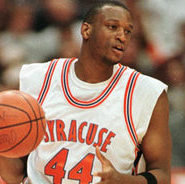




No comments:
Post a Comment